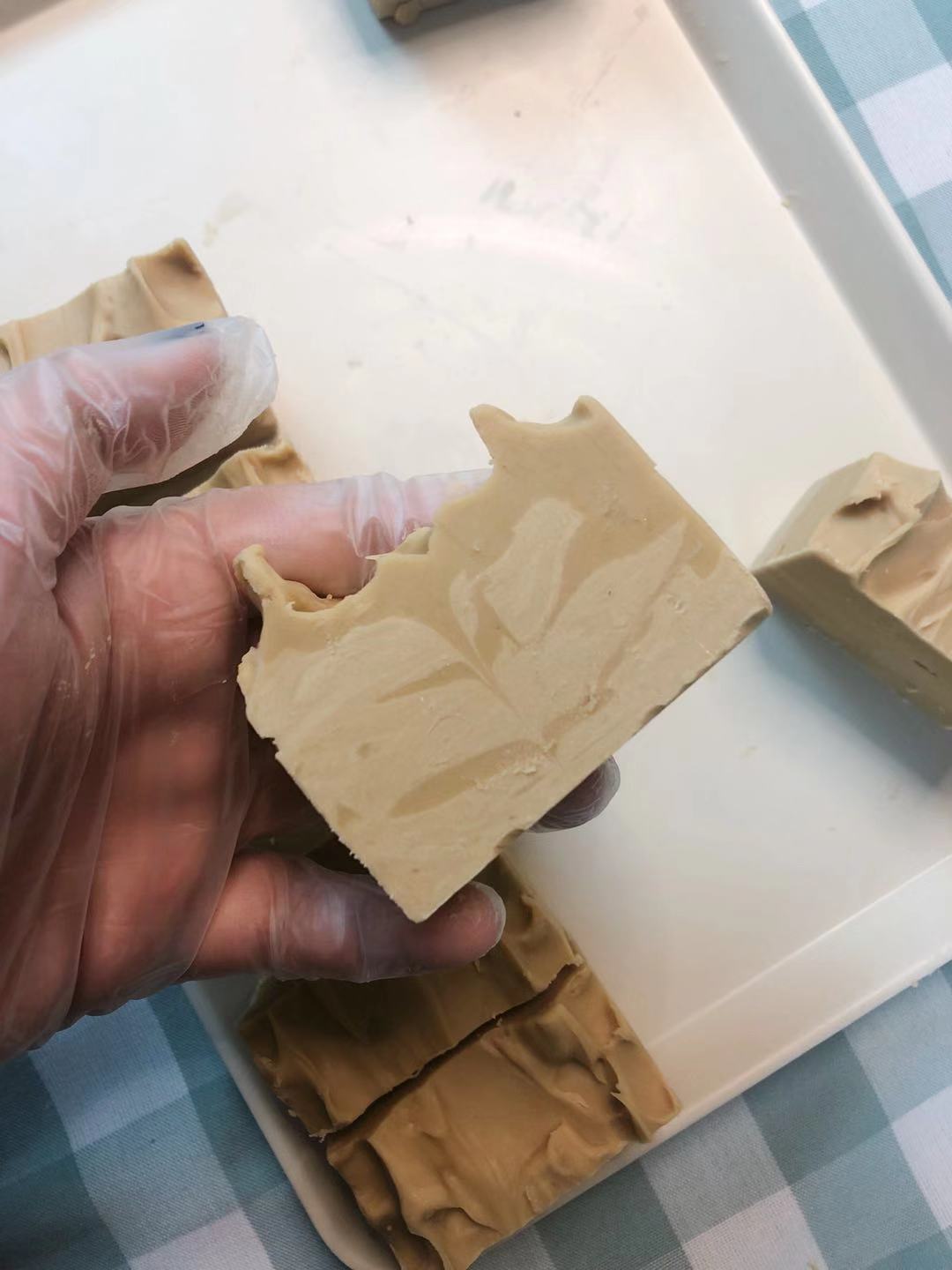Anstarx
Well-Known Member
I made a batch of horse oil soap yesterday and used kumis (fermented mare's milk) as my water.
Since it's an alcoholic drink, i boiled it down and threw in some sugar for lather. I froze it to a slush and added my lye. As soon as I added my lye it started to turn yellow and red. Eventually it turned dark brown and the temperature raised so fast it started fuming. Since I was mixing it in a plastic beaker (it's pp) I worried that it may warp the plastic so I quickly made a ice bath and put the whole beaker in.
I let it sit for about 10 min when I mix my oils.
When I started pouring the lye, it came out normal at first but soon I can see there is a thick layer in the bottom of the beaker that won't come out. I tried to shake a beaker and it wiggles like a jelly. After shaking the beaker a few times the gel came out and I mixed it with oil just fine. After some stick blending you couldn't feel the gel anymore The batch traced really fast but other than that everything seemed normal.
Unfortunately I didn't take any picture. However, I'm curious about what caused the gelatinous lye. I observed that only the part of beaker that was in the ice bath has the gel state, the upper part is still liquid. Maybe the temperature difference caused it to gel?
Since it's an alcoholic drink, i boiled it down and threw in some sugar for lather. I froze it to a slush and added my lye. As soon as I added my lye it started to turn yellow and red. Eventually it turned dark brown and the temperature raised so fast it started fuming. Since I was mixing it in a plastic beaker (it's pp) I worried that it may warp the plastic so I quickly made a ice bath and put the whole beaker in.
I let it sit for about 10 min when I mix my oils.
When I started pouring the lye, it came out normal at first but soon I can see there is a thick layer in the bottom of the beaker that won't come out. I tried to shake a beaker and it wiggles like a jelly. After shaking the beaker a few times the gel came out and I mixed it with oil just fine. After some stick blending you couldn't feel the gel anymore The batch traced really fast but other than that everything seemed normal.
Unfortunately I didn't take any picture. However, I'm curious about what caused the gelatinous lye. I observed that only the part of beaker that was in the ice bath has the gel state, the upper part is still liquid. Maybe the temperature difference caused it to gel?



















































